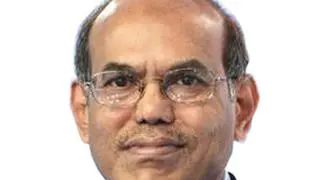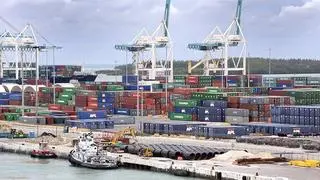What does a person neck-deep in debt normally do?
The conservative approach would be to cut back on discretionary spending, sell off non-critical assets and, above all, stop contracting fresh debt. The more enterprising debtors would consider other options as well – say, working harder to earn more or, simply, hoping for inflation to erode the real value of their liabilities.
For governments – more so electoral democracies – austerity, privatisation and restraint on incurring further borrowings do not come easily.
So, it is more natural for them to explore the alternative, less-conservative options, as the Government of India has seemingly done.
Between 2002-03 and 2010-11, the Centre's outstanding liabilities – all forms of internal and external debt on which it incurs interest – have mounted over 2.5 times, from Rs 15,59,201.36 crore to Rs 39,31,104.75 crore. During the coming fiscal, they are budgeted to further increase to Rs 43,52,689.04 crore.
Debt sans crisis
The expansion in overall debt has, however, not given rise to any crisis, leave alone raise the possibilities of a sovereign default. One reason for this is that as a proportion of the country's gross domestic product (GDP), the Centre's debt stock has steadily fallen from a peak of 63.5 per cent in 2002-03 to below 50 per cent.
The cost of servicing the debt, measured by interest payments as a percentage of GDP, has also declined from 4.8 to around three.
The decline in these ratios has, obviously, to do with GDP growing at a faster pace than debt. Thus, while the Centre's debt has gone up by over 152 per cent between 2002-03 and 2010-11, GDP at current market prices has correspondingly increased by 221 per cent.
Now, if one delves into the composition of this 221 per cent GDP increase, it is interesting that only 127 per cent represents ‘real' output expansion. The balance 94 per cent has come from inflation, which has, therefore, played no small part in lightening the Centre's debt burden. A case of inflating away one's debt!
The significance of a 221 per cent nominal GDP increase between 2002-03 and 2010-11 would be realised when one takes the preceding nine years from 1994-95 to 2002-03. That period saw a cumulative GDP growth of 142 per cent, as against the nearly 190 per cent for debt, resulting in the debt-GDP ratio going up from 53 per cent to 63.5.
The overall improvement in the Centre's debt situation since 2002-03 can be, in other words, credited largely to strong GDP growth – both ‘real' as well as inflation-induced.
Strong growth has not just helped boost denominator values. It has also positively impacted the Centre's own tax and non-tax revenues, thereby reducing reliance on debt and making it easier to service existing liabilities.
Interest payments now eat into only a third of the Centre's revenue receipts, from over half in 2002-03.







Comments
Comments have to be in English, and in full sentences. They cannot be abusive or personal. Please abide by our community guidelines for posting your comments.
We have migrated to a new commenting platform. If you are already a registered user of TheHindu Businessline and logged in, you may continue to engage with our articles. If you do not have an account please register and login to post comments. Users can access their older comments by logging into their accounts on Vuukle.